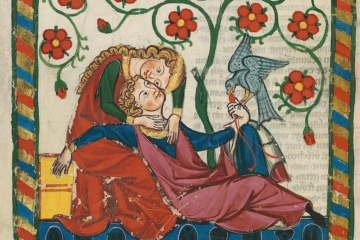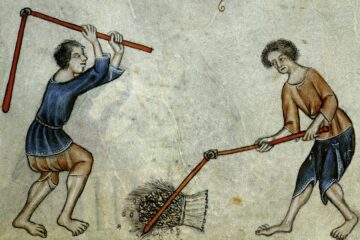The nature and size of Rosewood lend themselves to the development of a rather unsavory stratum of society infamous for its ruthlessness and efficiency, known as the Undercity, the Underworld, the Underground, or the Underbelly. Unlike the rest of society, members of this stratum make ends meet by engaging in illegal activities and profiting off of the suffering of others. Instead of helping their communities, these individuals are concerned only about furthering their own goals and ambitions. Their morals along with their negative impact on daily life within the Capital are what makes them prime targets for the City Watch.
Surprisingly enough, the way their society is set up is similar to how legitimate society works. Just like the artisans of Rosewood, these criminals require organizations to protect them against competitors, the Watch, and most importantly, themselves. Criminal gangs are the underworld’s equivalent of guilds, created to ensure a certain quality of crime, while also providing support for those that support it; the key difference being that blacksmiths sell nails, while these “artisans” sell crime.
While there are dozens of gangs within Rosewood, the three most powerful are the Armington Clan, the Wolves of the Woods, and the Kingfisher Company. It is important to note that crime flourished during the Fifty Years’ War. However, as soon as the sieges began, Rosewood’s crime saw a sharp increase, followed by an even sharper drop due to the draconian measures put in place by the City. The Fall of Rosewood saw the majority of the largest gangs annihilated. They did leave a power vacuum behind which the Armington Clan and Kingfisher Company capitalized on. The Wolves on the other hand are far older. They have been mentioned in Watch reports going all the way back to the founding of the Empire. Conversely, the Armingtons were first mentioned in 1168, and the Kingfishers in 1210, although they have their roots in an older gang that popped up around 1180 along with the Restoration. These three have risen to the top of the ladder and are responsible for nearly all of Rosewood’s criminal activity.
Despite their criminal nature, their activity is symbiotic with Rosewoodian daily life. The three gangs keep each other in check, with the Watch intervening mostly in order to stifle the growth of one only if it engulfs the others. For all their brutality, they are civilized compared to the gangs of the Fifty Years’ War. A number of citizens understand and recognize this philosophy; the office of the Mayor tolerates these gangs out of fear of giving rise to something worse were they to be crushed. What’s more, these gangs are run differently compared to the gangs of yore. Instead of having one central figure leading a gang, a gang leader, the gangs have multiple powerful and influential individuals under the same banner that see each other as competition but will band together to fend off an outside threat. These powerful individuals are called crimelords, and they occasionally will start gang wars to secure their dominance, but the way the gangs are structured, it is impossible. The Three operate on a decentralized model, making them weaker overall, but much harder to combat.
For years, there has been a shadowy figure present within the dealings and whispers of the Undercity. He is known only as the Long Lost Son. Rumors say that he is secretly steering events in Rosewood to some unknown end. His existence is only speculated. Most use his alias as a means to frighten children. Those who pay close attention to the myth are consumed by it, sometimes figuratively, sometimes literally. Either way, those who dabble in Rosewood’s criminal Underworld learn one way or another – you play with fire, you get burned.


